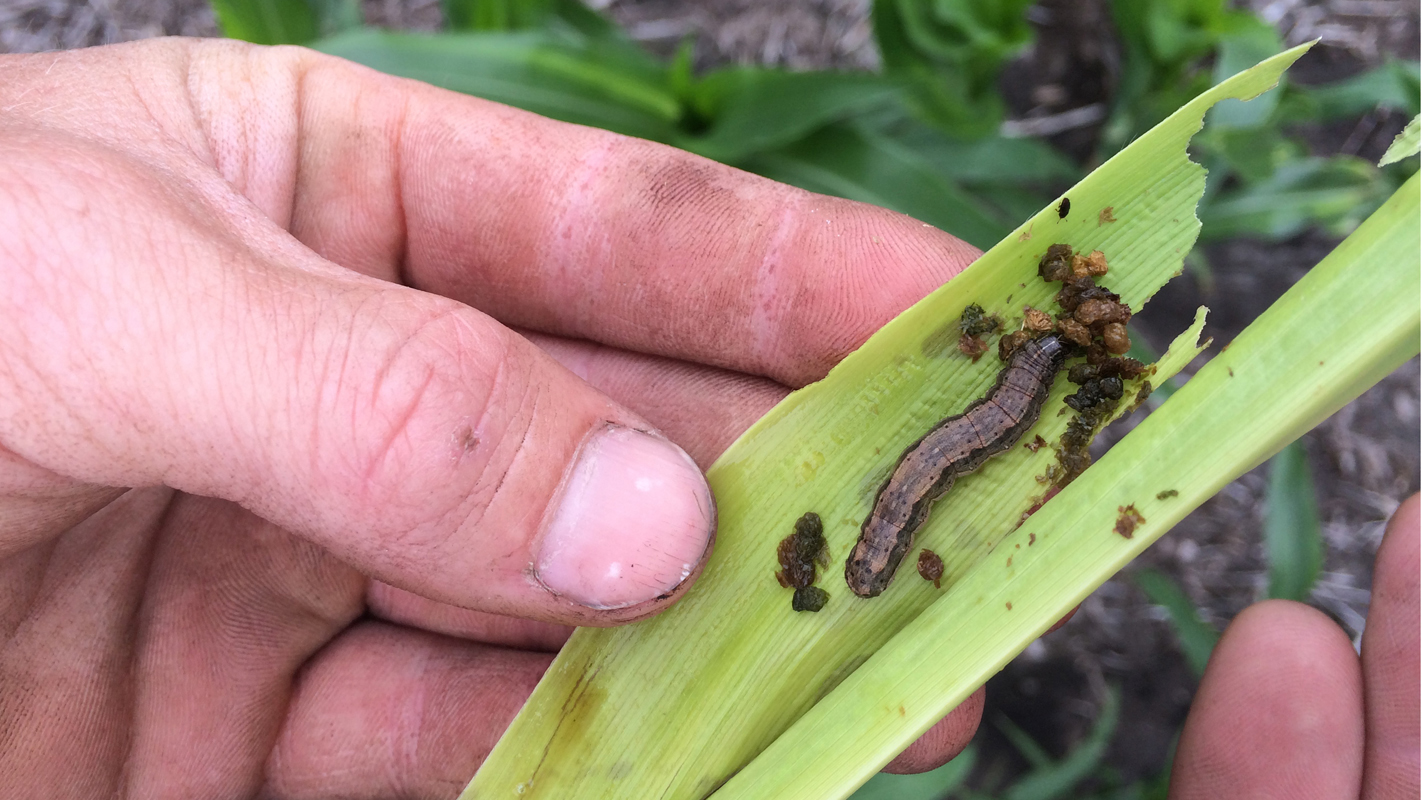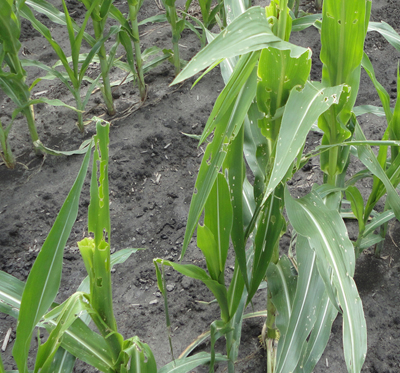Something Resistant This Way Comes: An Insect Mystery

In fall 2013, Dominic Reisig got a phone call from a farmer in rural Hyde County, N.C. The farmer was growing corn, and it was literally falling apart in the field. What was going on?
Reisig is an entomologist at North Carolina State University; a sort of science detective who specializes in insects that pose a threat to crops. And the farmer had presented him with a mystery.
When Reisig arrived, he quickly determined that the culprits were fall armyworms (Spodoptera frugiperda), a pest species that costs farmers in the southeastern United States tens of millions of dollars each year.
What made this case so perplexing was that the farmer had planted a variety of genetically engineered corn that produces a Bacillus thuringiensis (Bt) protein that should be fatal to armyworms. But it wasn’t.

As adults, S. frugiperda are unprepossessing moths with drab wings that fade from a mottled brown forewing to a creamy pale hindwing. But in their larval stage, S. frugiperda are fall armyworms – caterpillars the size of a pen cap that devour whole crops, from soybeans to cotton to corn.
In short, armyworms are cause for concern. Especially if they have developed the ability to devour the toxins farmers use to protect their crops.
So Reisig collected some of the armyworms from the farm in Hyde County and took them back to his lab, where he created a colony of the insects for study. And while he bred armyworms, he also grew two varieties of corn in his greenhouse – some Bt corn, like that grown by the farmer, and some non-Bt corn. Then Reisig fed the corn to both “normal” armyworms and to the armyworms he’d brought back from Hyde County.
Both armyworms could eat the non-Bt corn. But while the normal armyworms died when fed Bt corn, the Hyde County armyworms ate their way right through it – oblivious to the poisons that should have killed them.
Meanwhile, Reisig also reached out to a colleague at Louisiana State University named Fangneng Huang, an acknowledged expert on armyworms and resistance to Bt crops.
Huang had discovered armyworms that could cope with Bt proteins in the past, but none had been found further north than Louisiana or Florida. Could these NC worms be a new outbreak of the resistant pest?
Reisig sent samples of the Bt-resistant North Carolina armyworms to Huang for analysis. Huang ran tests on the NC armyworms and found that they were among the most Bt-resistant strains of armyworm that Huang had tested – equivalent to a strain found in Florida.
“This is a huge wake-up call for farmers north of Louisiana and Florida – this is definitely something to keep an eye on,” Reisig says. “Resistance happens, and it’s a stark reminder that we need to take steps – such as planting non-Bt ‘refuge’ crops near the Bt crops – to limit the development of resistant insect strains.”
To date, fall armyworms have not been a major crop pest in North Carolina, since they can’t survive a winter freeze. Studies have shown that these insects often migrate north from Florida, and this year Reisig found them in North Carolina corn fields as early as May.
The real fear is that these Bt-resistant armyworms will move from corn to cotton.
“That would be problematic, since cotton usually begins producing fruit (the marketable cotton bolls) in late July or early August – when fall armyworm populations have grown,” Reisig says. “Corn is less threatened, since it is at its most vulnerable in the spring, when fall armyworm populations are still low in N.C.
“We’ve done greenhouse studies and found that this Bt-resistant armyworm can certainly eat genetically modified cotton; we just haven’t seen it happen in the field yet,” Reisig says.
A new paper on the Bt-resistant fall armyworms was published in the open access journal PLOS ONE on Nov. 17. Huang is lead author. The paper, “Cry1F resistance in fall armyworm Spodoptera frugiperda: single gene versus pyramided Bt maize,” was co-authored by Reisig and researchers from LSU, the University of Florida, the U.S. Department of Agriculture, the University of Minnesota, and the University of Georgia.
- Categories:


